When I was putting together Sage’s playroom I wanted to create a space that would facilitate learning and allow Sage to have full control over his activities. Many of my ideas and design concepts for the playroom were inspired by the Montessori philosophy.
The Montessori learning style appeals to me because it encourages independence and creativity, but most importantly, it’s about play-based learning and discovery. Children learn how to do important tasks and then they’re given the freedom to choose what they want to focus on, instead of being shown how to play. Maria Montessori found that children learn extensively through interacting with their environment as they play.
Key Elements of Sage’s Perfect Playroom
Low Shelving: The first thing kids need to become more independent in their play space is access to their toys, books, and games. I wanted to make sure Sage could reach everything in his room so he would be able to choose activities on his own. Sage’s shelving came from several spots including Goodwill, where we found this awesome cube with a door, and his shelves are from Ikea. The TROFAST shelving unit is my favorite because it comes with colorful bins that you can customize for toys.
Table and Chairs: Again, it was important for Sage to have furniture that is size appropriate and safe. Furniture that is low to the ground makes it easy to use. This creates independence in which the child can sit in the chair and play at the table at his or her own will. We bought a table from Ikea for $25 and sawed the legs to create a perfect height for Sage. The perfect height for Sage was 12” legs on the table and 5 1/2” legs on the chairs. The original table came with table height of 17 3/4” and seat height 11”. We added the table to Sage’s playroom when he was approximately six months old and could comfortably sit up by himself.
Subject Areas: I organized Sage’s playroom based on “subject areas.” Everything in his room has a “home” and is organized with other items in their specified subject. This makes it easier for the child to choose their activity without becoming overwhelmed with too many options. Plus, this makes cleanup simple so Sage can participate. Below are a list of subject areas I incorporated into Sage’s playroom with examples of toys in each space.
- Reading Area – This consists of a low bookshelf so Sage has access to all of his books. TV stands are a great type of furniture for playrooms, especially if you need a low book shelf. He also has his own reading chair which he frequently curls up in with a book and stuffed animal. We found this great reading chair and ottoman at Marshall’s HomeGoods that was less expensive than similar items found at stores like Pottery Barn Kids. Above his reading chair we hung smaller “book shelves” for his smaller books. These shelves are actually spice racks sold at Ikea. They allow for the covers of the books to be displayed. This helps him find what he wants more easily.
- Motorcade Area – This area consists of all of Sage’s cars, trucks and trains. Basically anything with wheels or sirens is parked here. It was tough to find the right shelving for this part of his room because the shelves needed to be wide. I found this nightstand at Ikea for only $14.99 and it works really well.
- Pretend Play – Pretend play, sometimes called symbolic play, imaginative play, dramatic play or good old “make-believe,” is essential for your child’s development. Studies have demonstrated cognitive benefits such as increases in language usage including subjunctives, future tenses, and adjectives. The important concept of “theory of mind,” an awareness that one’s thoughts may differ from those of other persons and that there are a variety of perspectives of which each of us is capable, is closely related to imaginative play.This area in Sage’s room is a cubby with a door on it. Behind the door is all of Sage’s pretend food. We also stocked it with plates and bowls so Sage can put pretend meals together. In addition to the pretend food, we have a basket full of jumbo animals for pretend play. Sage is pretty good at making animal sounds and motions — he enjoys playing with these animals. We have a set of dinosaurs and jungle animals. However, the most exciting thing about pretend play is it can happen anywhere with anything. It’s amazing what objects Sage can turn into his “phone” to chat with friends.
- Arts & Crafts/Math – This area is comprised of Sage’s table and chairs and is a great space for drawing and playing with puzzles. We purchased a puzzle rack to organize Sage’s puzzles so he can easily select which puzzle he would like to play with any time he wants. We also have a stack and sort toy available which helps Sage learn colors and shapes, and begin counting.
- Sensory Play Area – Sensory play includes any activity that stimulates your young child’s senses: touch, smell, taste, sight and hearing. Sensory activities facilitate exploration and naturally encourage children to use scientific processes while they play, create, investigate and explore. Spending time stimulating their senses helps children develop cognitively, linguistically, socially and emotionally, physically and creatively.In the sensory area we have drawers full of balls, building blocks, puppets, and musical instruments. When Sage was little we invested in lots of different balls from various shapes, size, colors and textures. He loves throwing the balls and discovering the differences between them as well as experimenting with how far he can throw something. (We think we have a future baseball player on our hands!)As for the instruments, when friends come over it’s great to have jam sessions! Between the drums, maracas, and bells, the music is magnificent. I recommend this musical instrument pack from Kilofly. For the building blocks we have small wooden blocks, chewable building blocks in various shapes, Megabloks and infant building cubes. However, Sage still has more fun knocking the buildings down instead of building them up.
Mirrors: I would recommend a mirror for every playroom. There are many benefits to mirror play from the infant stage into toddlerhood and beyond. Children are social beings, developing their social skills every day, including learning self-identity. Mirrors are an important tool to use in the social and educational development of infants and toddlers. They also provide hours of interactive play for young children.
Using mirrors with infants and toddlers promotes self-awareness, ego and reading skills. Lacan’s theory of the Mirror Stage is said to be from the ages of six to 18-months-old, and is when a child begins to recognize “self” as the image he or she sees in the mirror. (In Sage’s room he has mirror sliding closet doors so he gets to look at himself a lot!)
Decor: And finally, make the room fun! I recommend painting and decorating the child’s room to encourage individuality and creative stimulation. We painted Sage’s room a bright green and added monkey wall decals. The monkey’s are dangling above his crib and appear to be dropping leaves into his crib. It’s fun to watch Sage on the monitor playing with these wall decals. I think this is why his favorite stuffed animal is a monkey.
These are just some of my ideas about how to create the perfect playroom for your little one. Remember, the most important ingredient is you and all of your fun play time with them. Sage’s room is designed so he can independently choose the activity to play with, but it is my role to facilitate that play.
I also recommend opening your child’s play spaces to more than one room in the house. For example, it’s easy to dedicate one drawer in your kitchen to your child with kid-friendly items such as tupperware and measuring cups.
As always, I would love to hear what you have incorporated into your child’s playroom.


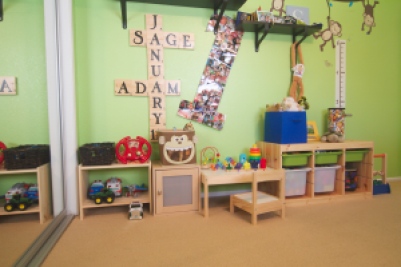
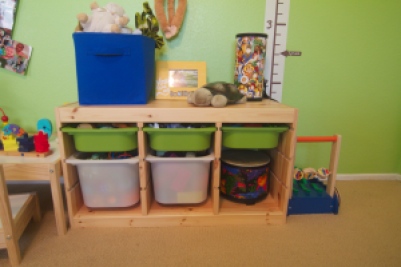

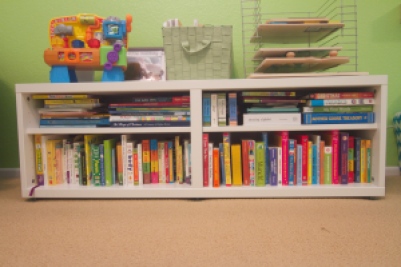
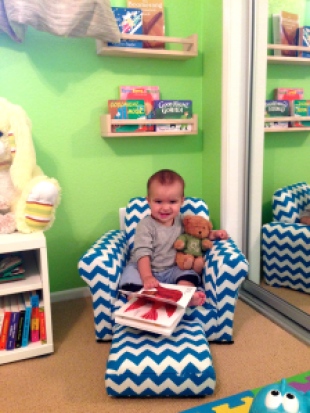
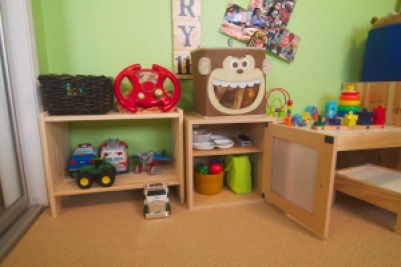
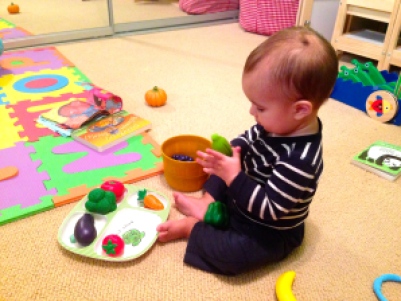

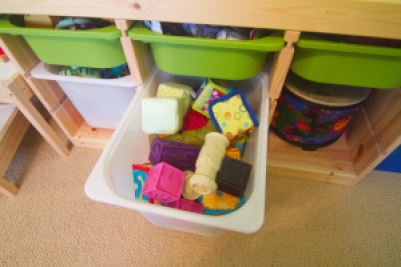
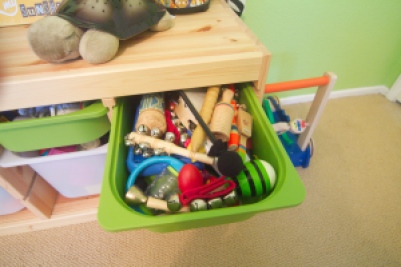
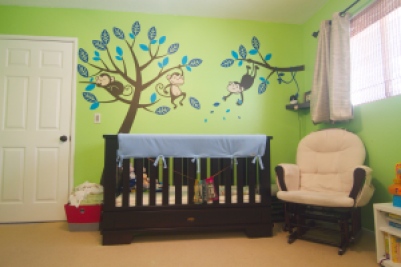
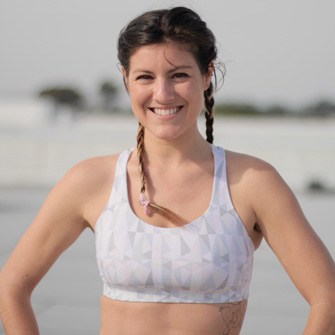
You’re awesome! 🙂
Hmm is anyone else experiencing problems with the images on this blog loading?
I’m trying to determine if its a problem on my ennd
or if it’s the blog. Any suggestions would be greatly appreciated.
Here is my blog; automotive diagnostic tools. (Gabriela)